 Credit where credit is due, there’s no way I could keep up this 31 Days, 31 Lists series if I hadn’t put in my time with New York Public Library. It was there that I learned precisely how to read, track, remember, and call forth the books I read in a single year. The 100 Books List the library puts out every year proved to be my training grounds. I loved working on that list committee. I also loved how that list was separated. One section was always dedicated to Fairy Tales and Folktales, and I’ve maintained the tradition here.
Credit where credit is due, there’s no way I could keep up this 31 Days, 31 Lists series if I hadn’t put in my time with New York Public Library. It was there that I learned precisely how to read, track, remember, and call forth the books I read in a single year. The 100 Books List the library puts out every year proved to be my training grounds. I loved working on that list committee. I also loved how that list was separated. One section was always dedicated to Fairy Tales and Folktales, and I’ve maintained the tradition here.
A generation ago, fairy tales and folktales were ubiquitous. Because libraries made up a significant share of the book buying market, they could set the terms. And what they liked were fairy and folktales. The publishing industry complied and life was good. The rise of big box stores, to say nothing of the internet, heralded the end of the fairy/folktale era. With libraries only a fraction of the buying force, the picture book became king and the fairy and folktales almost disappeared entirely. It’s only in the last few years that small publishers have picked up the slack. While The Big Six become The Big Five soon to be The Big Four, small independent publishers are daring to do what the big guys won’t. Publishing these books has become a kind of rebellion with kids reaping the benefits.
Here are the good books of 2016!
2016 Fairy Tales / Folktales
Babushka: A Christmas Tale by Dawn Casey, ill. Amanda Hall
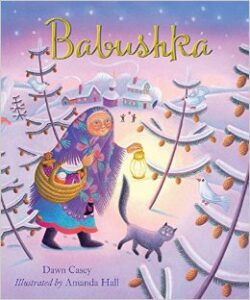
I wouldn’t be surprised if I learned that there was a small running debate as to whether the story of the kind-hearted Babushka was strictly considered to be a folktale. I think it is, and I think it’s great. And the perfect book to read before the holiday season as well!
Beauty and the Beast retold by Mahlon F. Craft, ill. Kinuko Y. Craft
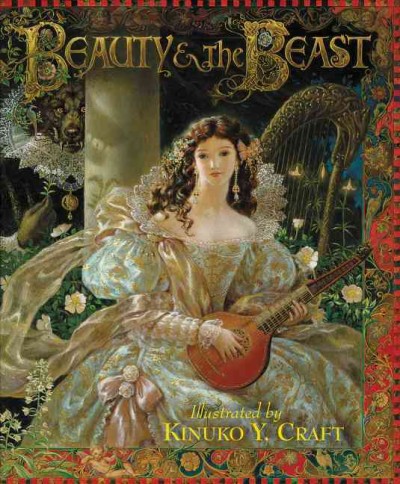
Hooray! A new Craft!! How long has it been? Whatever the case, Craft was always the illustrator I’d turn to when I got small patron insisting on “Pretty fairytales”. Which, as I soon learned, was a desire that could easily be satisfied by just handing the kid one of Craft’s books. No one was quite as consistently appealing as Craft.
The Blue Jackal by Shobha Viswanath, ill. Dileep Joshi
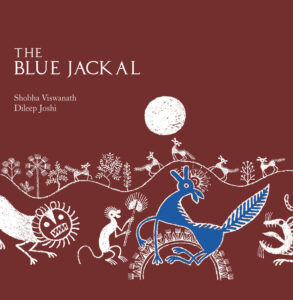
Caterpillar Woman by Nadia Sammurtok, ill. Carolyn Gan
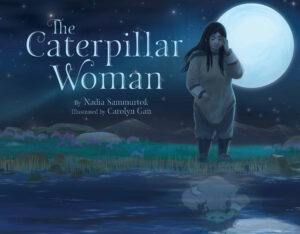
Inhabit Media is a small publisher that consistently puts out remarkable Inuit stories. There were quite a few in 2016 but this one stood out as my favorite. I like it for its flaws. Not in spite of them.
Dwarf Nose by Wilhelm Hauff, ill. Elizabeth Zwerger
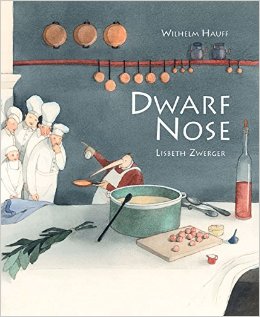
Technically this book is a reprint. Technically I don’t care. I love the disjointed nature of their story. I love that the villain’s name is Herbwise. And, naturally, I like the unexpected ending.
Farmer Falgu Goes on a Trip by Chitra Soundar, ill. Kanika Nair
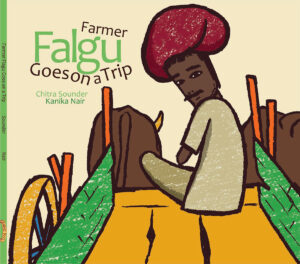
Consider it a version of Zemach’s It Could Always Be Worse.
First Light, First Life: A Worldwide Creation Story by Paul Fleischman, ill. Julie Paschkis.
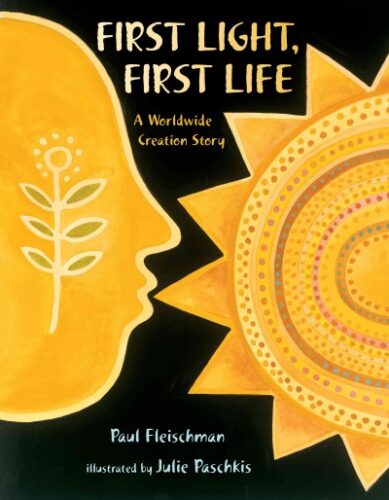
Fleischman and Paschkis paired once before to collect worldwide stories and song and riddles and rhymes in a Cinderella Story. Now he’ coming back and there’s going to be girls.
Hare and Tortoise by Alison Murray
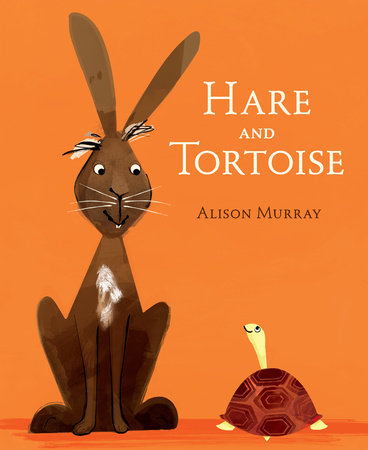
We don’t have a lot on this list for kids that are below the ages of 6. Here’s one they’ll ask for again and again.
I Am Pan! by Mordicai Gerstein
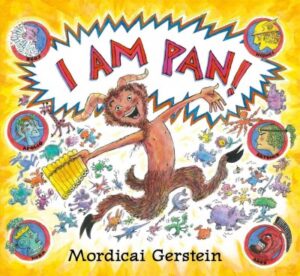
A little Greek mythology never hurt anyone. And who knew that Gerstein had this much stamina in him? This thing writes, pops, jumps, and does a tapdance on your head, if you let it.
Little Red by Bethan Woollvin

Everyone appears to be just GAGA about this work! The red, black, and white and near wordless plotting work in terms. A lovely retelling.
The Pied Piper of Hamelin by Thomas Baas
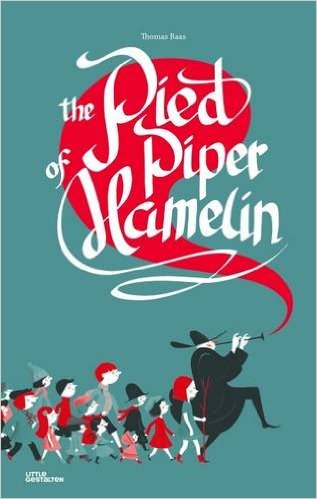
A Word of Warning: If you don’t care for rats, this may not be the book for you. But just look at those colors! Gorgeous.
Prince of Fire: The Story of Diwali retold by Fatinder Verma, ill. Nilesh Mistry

Insofar as I can tell there hasn’t been a definitive Diwali origin published in at least 10 years.
The Princess and the Warrior: A Tale of Two Volcanoes by Duncan Tonatiuh
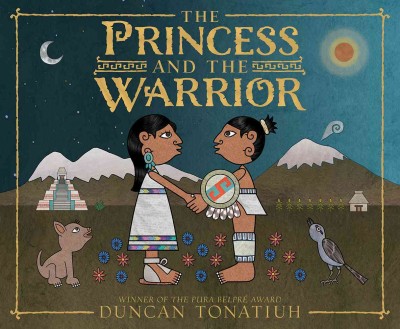
Come to think of it, warriors don’t tend to marry princesses in love stories. That’s okay. It’s still a cool tale.
The Singing Bones by Shaun Tan

Snippets of Grimm stories are paired with Tan’s remarkable interior models and photography. Creepy beautiful, if that’s a thing.
The Steadfast Tin Soldier by Hans Christian Andersen, retold and illustrated by Joohee Yoon

It’s the original story, which is to say it’s just as depressing as you remembered. Still, the typography, design and colors are superb.
Tales from the Arabian Nights: Stories of Adventure, Magic, Love, and Betrayal by Donna Jo Napoli, ill. Christina Balit

That would be the winner of the Best Tagline award. Well done.
Thumbelina by Xanthe Gresham Knight, ill. Charlotte Gastaut
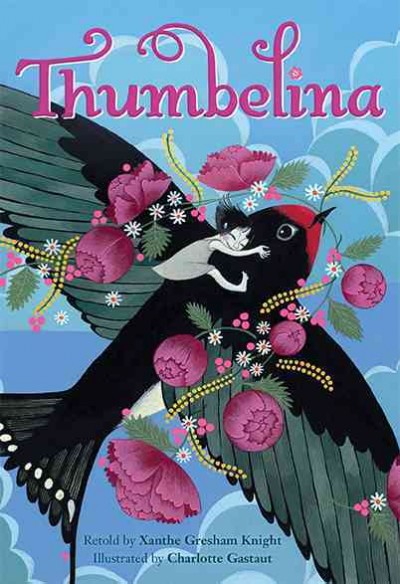
Oh, it’s so good! I’ve always been very concerned with the mother that Thumbelina abandons in this story. This book, for the very first time in my experience, tackles that loose end head-on. Woohoo!
Vasilisa the Beautiful: A Russian Folktale by Anna Morgunova

There’s a bit of Klimpt to the art here, I’ll admit it.But otherwise I’d say that the book is an original. Love the retelling, adore the art, and I hope the kids appreciated it.
Interested in the other lists of the month? Here’s the schedule so that you can keep checking back:
December 1 – Board Books
December 2 – Board Book Adaptations
December 3 – Nursery Rhymes
December 4 – Picture Book Readalouds
December 5 – Rhyming Picture Books
December 6 – Alphabet Books
December 7 – Funny Picture Books
December 8 – Calde-Nots
December 9 – Picture Book Reprints
December 10 – Math Picture Books
December 11 – Bilingual Books
December 12 – International Imports
December 13 – Books with a Message
December 14 – Fabulous Photography
December 15 – Fairy Tales / Folktales
December 16 – Oddest Books of the Year
December 17 – Older Picture Books
December 18 – Easy Books
December 19 – Early Chapter Books
December 20 – Graphic Novels
December 21 – Poetry
December 22 – Fictionalized Nonfiction
December 23 – American History
December 24 – Science & Nature Books
December 25 – Transcendent Holiday Titles
December 26 – Unique Biographies
December 27 – Nonfiction Picture Books
December 28 – Nonfiction Chapter Books
December 29 – Novel Reprints
December 30 – Novels
December 31 – Picture Books

 Dwarf Nose
Dwarf Nose
By Wilhelm Hauff
Illustrated by Lisbeth Zwerger
Translated by Anthea Bell
Minedition
$19.99
ISBN: 97898888341139
Ages 8-12
On shelves April 1st
It seems so funny to me that for all that our culture loves and adores fairytales, scant attention is paid to the ones that can rightfully be called both awesome and obscure. There is a perception out there that there are only so many fairytales out there that people really need to know. But for every Cinderella or Sleeping Beauty you run into, there’s a Tatterhood or Riquet with the Tuft lurking on the sidelines. Thirty or forty years ago you’d sometimes see these books given a life of their own front and center with imaginative picture book retellings. No longer. Folktales and fairytales are widely viewed by book publishers as a dying breed. A great gaping hole exists, and into it the smaller publishers of the world have sought to fulfill this need. Generally speaking they do a very good job of bringing world folktales to the American marketplace. Obscure European fairytales, however, are rare beasts. How thrilled I was then to discover the republication of Wilhelm Hauff and Lisbeth Zwerger’s Dwarf Nose. Originally released in America in 1995 by North-South books, the book has long been out-of-print. Now the publisher minedition has brought it back and what a beauty it is. Strange and sad and oddly uplifting, this tale has all the trappings of the fairytales you know and love, but somehow remains entirely unexpected just the same.
For there once was a boy who lived with his two adoring parents. His father was a cobbler and his mother sold vegetables and herbs in the market. One day the boy was assisting his mother when a very strange old woman came to them and starting digging her dirty old hands through their wares. Incensed, the boy insulted the old woman, which as you may imagine didn’t go down very well. When the boy is made to help carry the woman’s purchases back to her home he is turned almost immediately into a squirrel and made to work for seven years in her kitchen. After that time he awakes, as if in a dream, only to find seven years have passed and his body has been transformed. Now he has no neck to speak of, a short frame, a hunched back, and a extraordinarily long nose. Sad that his parents refuse to acknowledge him as their son, he sets forth to become the king’s cook. And all would have gone without incident had he not picked up that enchanted goose in the market one day. Written in 1827 this tale is famous in Germany but remains relatively obscure in the United States today.
 I go back and forth when I consider why this fairytale isn’t all that famous to Americans. There are a variety of reasons. There are some depressing elements to it (kid is unrecognizable to parents, loses seven years of his life, etc.) sure. There aren’t any beautiful princesses (except possibly the goose). The bad guy doesn’t even appear in the second act. Still, it’s the peculiarities that give it its flavor. We’ve heard of plenty of stories where the heroes are transformed by the villains, but how many villains give those same heroes a useful occupation in the process? It’s Dwarf Nose’s practicalities that are so interesting, as are the nitty gritty elements of the tale. I love the use of herbs particularly. Whether the story is talking about Sneezewell or Bellyheal, you get the distinct feeling that you’re listening to someone who knows what they’re talking about. Plus there are tiny rodent servants. That’s a plus.
I go back and forth when I consider why this fairytale isn’t all that famous to Americans. There are a variety of reasons. There are some depressing elements to it (kid is unrecognizable to parents, loses seven years of his life, etc.) sure. There aren’t any beautiful princesses (except possibly the goose). The bad guy doesn’t even appear in the second act. Still, it’s the peculiarities that give it its flavor. We’ve heard of plenty of stories where the heroes are transformed by the villains, but how many villains give those same heroes a useful occupation in the process? It’s Dwarf Nose’s practicalities that are so interesting, as are the nitty gritty elements of the tale. I love the use of herbs particularly. Whether the story is talking about Sneezewell or Bellyheal, you get the distinct feeling that you’re listening to someone who knows what they’re talking about. Plus there are tiny rodent servants. That’s a plus.
We like it when our fairytales give us nice clear-cut morals. Be clever, be kind, be good. This may be another reason why Dwarf Nose never really took off in the States. At first glance one would assume that the moral would be about not judging by appearances. Dwarf Nose’s parents cannot comprehend that their beautiful boy is now ugly, and so they throw him out. He gets a job as a chef but does not search out a remedy until the goose he rescues gives him some hope. I was fully prepared for him to remain under his spell for the rest of his life without regrets, but of course that doesn’t happen. He’s restored to his previous beauty, he returns to his parents who welcome him with open arms, and he doesn’t even marry the goose girl. Hauff ends with a brief mention of a silly war that occurred thanks to Dwarf Nose’s disappearance ending with the sentence, “Small causes, as we see, often have great consequences, and this is the story of Dwarf Nose.” That right there would be your moral then. Not an admonishment to avoid judging the outward appearance of a thing (though Dwarf Nose’s talents drill that one home pretty clearly) but instead that a little thing can lead to a great big thing.
 When this version of Dwarf Nose was originally released in the States in 1994 the reviews were puzzled by its length. Booklist said it was “somewhat verbose to modern listeners” and School Library Journal noted the “grotesque tenor of the book”. Fascinatingly this is not the only incarnation of this tale you might find in America. In 1960 Doris Orgel translated a version of “Dwarf Long-Nose” which was subsequently illustrated by Maurice Sendak. The School Library Journal review of Zwerger’s version in 1994 suggested that the Sendak book was infinitely more kid-friendly than hers. I think that’s true to a certain extent. You get a lot more pictures with the Sendak and the book itself is a much smaller format. While Zwerger excels in infinitely beautiful watercolors, Sendak’s pen and inks with just the slightest hint of orange for color are almost cartoonish in comparison. What I would argue then is that the intended age of the audience is different. Sure the text is remarkably similar, but in Zwerger’s hands this becomes a fairytale for kids comfortable with Narnia and Hogwarts. I remember as a tween sitting down with my family’s copy of World Tales by Idries Shah as well as other collected fairytales. Whether a readaloud for a fourth grade class, an individual tale for the kid obsessed with the fantastical, or bedtime reading for older ages, Dwarf Nose doesn’t go for the easy audience, but it does go for an existing one.
When this version of Dwarf Nose was originally released in the States in 1994 the reviews were puzzled by its length. Booklist said it was “somewhat verbose to modern listeners” and School Library Journal noted the “grotesque tenor of the book”. Fascinatingly this is not the only incarnation of this tale you might find in America. In 1960 Doris Orgel translated a version of “Dwarf Long-Nose” which was subsequently illustrated by Maurice Sendak. The School Library Journal review of Zwerger’s version in 1994 suggested that the Sendak book was infinitely more kid-friendly than hers. I think that’s true to a certain extent. You get a lot more pictures with the Sendak and the book itself is a much smaller format. While Zwerger excels in infinitely beautiful watercolors, Sendak’s pen and inks with just the slightest hint of orange for color are almost cartoonish in comparison. What I would argue then is that the intended age of the audience is different. Sure the text is remarkably similar, but in Zwerger’s hands this becomes a fairytale for kids comfortable with Narnia and Hogwarts. I remember as a tween sitting down with my family’s copy of World Tales by Idries Shah as well as other collected fairytales. Whether a readaloud for a fourth grade class, an individual tale for the kid obsessed with the fantastical, or bedtime reading for older ages, Dwarf Nose doesn’t go for the easy audience, but it does go for an existing one.
Lisbeth Zwerger is a fascinating illustrator with worldwide acclaim everywhere except, perhaps, America. It’s not that her art feels too “foreign” for U.S. palates, necessarily. I suspect that as with the concerns with the length of Dwarf Nose, Zwerger’s art is usually seen as too interstitial for this amount of text. We want more art! More Zwerger! I’ve read a fair number of her books over the years, so I was unprepared for some of the more surreal elements of this one. In one example the witch Herbwise is described as tottering in a peculiar fashion. “…it was as if she had wheels on her legs, and might tumble over any moment and fall flat on her face on the paving stones.” For this, Zwerger takes Hauff literally. Her witch is more puppet than woman, with legs like bicycle wheels and a face like a Venetian plague doctor. We have the slightly unnerving sensation that the book we are reading is, in fact, a performance put on for our enjoyment. That’s not a bad thing, but it is unexpected.
 When Zwerger’s Dwarf Nose came out in 1994 it was entering a market where folktales were on the outs. Still, libraries bought it widely. A search on WorldCat reveals that more than 500 libraries currently house in on their shelves after all these years. And while folktale sections of children’s rooms do have a tendency to fall into disuse, it is possible that the book has been reaching its audience consistently over the years. It may even be time for an upgrade. Though it won’t slot neatly into our general understanding of what a fairytale consists of, Dwarf Nose will find its home with like-minded fellows. Oddly touching.
When Zwerger’s Dwarf Nose came out in 1994 it was entering a market where folktales were on the outs. Still, libraries bought it widely. A search on WorldCat reveals that more than 500 libraries currently house in on their shelves after all these years. And while folktale sections of children’s rooms do have a tendency to fall into disuse, it is possible that the book has been reaching its audience consistently over the years. It may even be time for an upgrade. Though it won’t slot neatly into our general understanding of what a fairytale consists of, Dwarf Nose will find its home with like-minded fellows. Oddly touching.
On shelves April 1st.
Source: Galley sent from publisher for review.
Misc: Check out this fantastic review of the same book by 32 pages.

 Credit where credit is due, there’s no way I could keep up this 31 Days, 31 Lists series if I hadn’t put in my time with New York Public Library. It was there that I learned precisely how to read, track, remember, and call forth the books I read in a single year. The 100 Books List the library puts out every year proved to be my training grounds. I loved working on that list committee. I also loved how that list was separated. One section was always dedicated to Fairy Tales and Folktales, and I’ve maintained the tradition here.
Credit where credit is due, there’s no way I could keep up this 31 Days, 31 Lists series if I hadn’t put in my time with New York Public Library. It was there that I learned precisely how to read, track, remember, and call forth the books I read in a single year. The 100 Books List the library puts out every year proved to be my training grounds. I loved working on that list committee. I also loved how that list was separated. One section was always dedicated to Fairy Tales and Folktales, and I’ve maintained the tradition here.
























You could write an entire column on “pretty” fairy tales–that is, fairy tales with illustrations that are naturalistic and richly colored. The children in my library love Craft, too, and they love Ruth Sanderson. In my childhood, I loved Adrienne Adams and Tasha Tudor. Gennady Spirin is a fascinating artist, and I’ve never lost my fondness for Errol LeCain. And of course, there’s Paul Zelinsky, who didn’t illustrate a lot of fairy tales, but who did a fabulous job on the ones he did. And of course, there’s Jerry Pinkney, who is both splendid and humane.
But I think Trina Schart Hyman is unsurpassed, even in a field with so many geniuses. Her paintings have so much to offer–sheer lyrical beauty, drama, danger, humor, and excellent characterizations.
I miss her!
I am LOVING these lists!!!!! Thanks so much for all of your hard work putting them together!
I miss her too. Of all the creators of children’s books I missed by a hair, she’s tied with Shel Silverstein. And I adore LeCain! His Twelve Dancing Princesses is still my one and only.
I shall proceed to steal the phrase “splendid and humane” for future use. Thank you for that!
Ahh! Kinuko Craft did my favorite adult book covers of all time, Patricia McKillip’s fantasies (nearly all of them, actually. Hurray to the publisher for keeping the same cover illustrator), but I somehow completely missed the fact that she’d done fairy tales. I will have to scour my library for them.
fyi – i think you threw in an extra “knight” after Xanthe Gresham. I couldn’t figure out why I couldn’t locate the book until I went to the magic of google….
Hm. Well, it’s on the cover and it appear in reviews like this Kirkus one: https://www.kirkusreviews.com/author/xanthe-gresham-knight/
How peculiar!